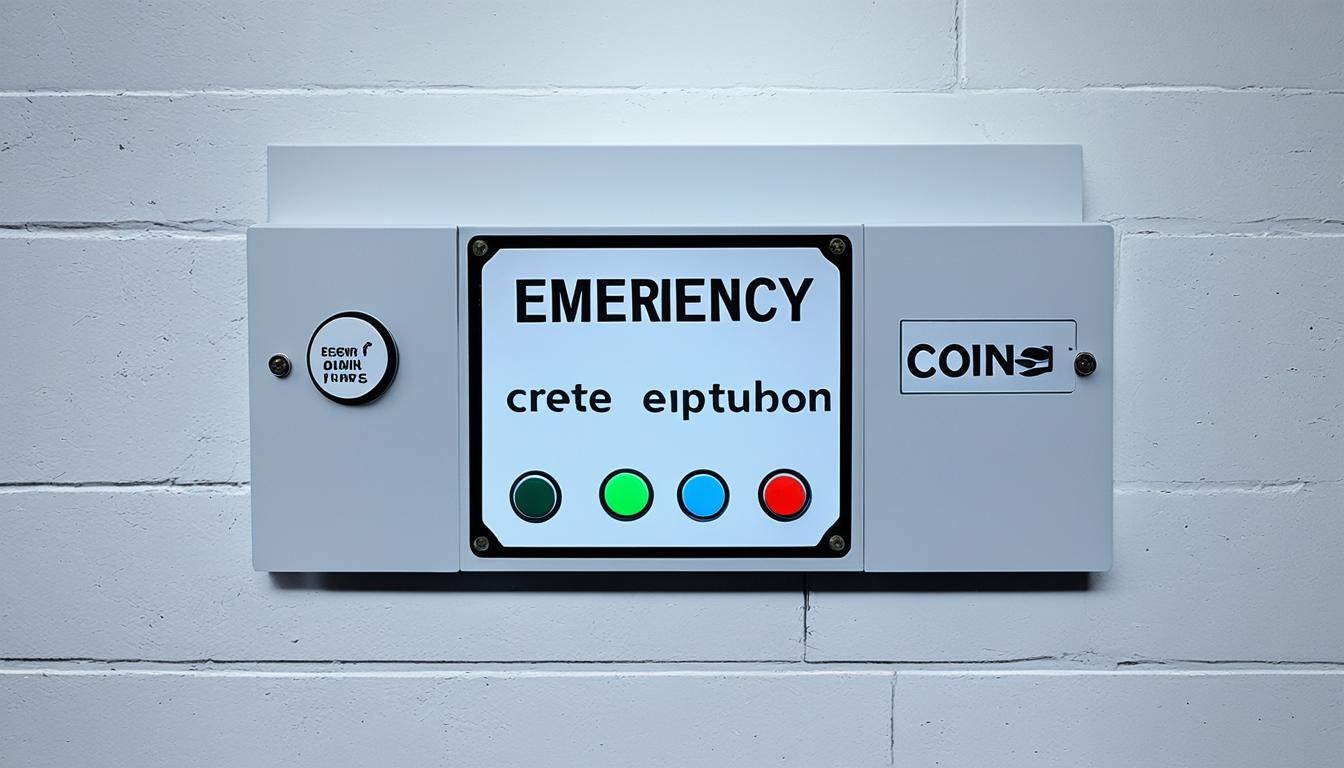When faced with a fire or emergency situation, every second counts. But what if you are unable to immediately evacuate the building? How can you communicate with emergency services and ensure your safety?
That’s where an Emergency Voice/Alarm Communication System (EVC) comes in. These systems provide a lifeline between individuals in need and the outside world during critical situations. Whether you have limited mobility or are in a phased evacuation building, an EVC system can make all the difference.
Key Takeaways:
- An Emergency Voice/Alarm Communication System (EVC) enables two-way communication between emergency services and individuals who are unable to immediately evacuate a building.
- EVC systems consist of a central control point and outstations strategically located throughout the building.
- British Standards provide recommendations for the design, installation, and maintenance of EVC systems.
- EVC systems prioritize the needs of disabled or physically impaired individuals during emergencies.
- Compliance with regulations and routine service and maintenance are crucial for the effective operation of EVC systems.
What is an EVC System?
An EVC System, or Emergency Voice Communication System, is a full duplex system that allows two-way voice communication between a central control point and multiple outstations located throughout a building. It serves as a vital communication link between the fire service and individuals who need to be evacuated but are unable to immediately leave the premises.
The design and installation of EVC systems are governed by stringent British Standards and guidelines to ensure compliance with regulations. These systems are essential in buildings that require phased evacuation or have occupants with limited mobility.
The outstations, strategically placed throughout the building, provide a means of communication with the fire service, enabling them to coordinate evacuation efforts effectively. The safe refuge areas within the building can also be connected to the EVC system for communication and assistance during emergencies.
Key features and considerations of an EVC System include:
- Full duplex system: Allows simultaneous two-way communication for clear and effective communication between the central control point and outstations.
- Outstations: Multiple locations throughout the building where individuals can communicate with emergency personnel.
- Safe refuge areas: Designated areas within the building where individuals can seek safety during an emergency.
- Compliance with British Standards: Strict adherence to British Standards ensures the reliability and performance of the system.
- Recommendations for design, installation, and maintenance: Following industry recommendations ensures the system’s effectiveness and longevity.
It is important to position the outstations in areas with low background noise to ensure clear communication. Additionally, fire alarm sounders should not be located near the outstations to avoid interference or confusion.
The master station of the EVC System should be equipped with communication devices, indicators, and fault status indicators to monitor and control the system effectively.
Regular service and maintenance are crucial to keep the system in optimal condition. This ensures clear speech, unobstructed outstations, and proper operation of controls and indicators.
An EVC System provides a reliable and efficient means of communication during emergencies, enhancing the safety of building occupants and enabling effective coordination with emergency services.

Key Features of an EVC System
| Feature | Description |
|---|---|
| Full Duplex System | Enables simultaneous two-way communication for clear and effective communication between the central control point and outstations. |
| Outstations | Multiple locations throughout the building where individuals can communicate with emergency personnel during an evacuation. |
| Safe Refuge Areas | Designated areas within the building where individuals can seek safety during an emergency. |
| Compliance with British Standards | Stringent adherence to British Standards ensures the reliability and performance of the EVC system. |
| Recommendations for Design, Installation, and Maintenance | Following industry recommendations ensures the effectiveness and longevity of the EVC system. |
Why is EVC Needed?
EVC systems, also known as Emergency Voice Communication systems, serve several critical purposes. These systems are essential for compliance with national standards and building codes, providing a dedicated and reliable solution for emergency communication.
An EVC system enables controlled evacuation communication, allowing building management to effectively coordinate evacuation efforts with emergency personnel. This ensures a coordinated and safe evacuation process for all occupants.
During emergencies, EVC systems provide crucial guidance, assistance, and reassurance to building occupants. Clear and concise communication helps occupants understand the situation, follow instructions, and navigate to safety.
EVC systems also facilitate communication with occupants located in designated refuge areas. This ensures the safety of these individuals and allows necessary instructions or updates to be provided.
Moreover, EVC systems prioritize the needs of disabled or physically impaired individuals by offering them a means of communication and assistance during emergencies. By providing accessible communication channels, EVC systems ensure that all occupants have equal access to support and guidance.
Overall, EVC systems play a vital role in maintaining safety and compliance within buildings, enabling effective communication with emergency personnel, and providing assistance to occupants, especially those with disabilities or physical impairments.
| Benefits of EVC Systems | Examples |
|---|---|
| Compliance with national standards and building codes | Adherence to British Standards for EVC system design and installation |
| Controlled evacuation communication | Coordination between building management and emergency personnel during evacuation |
| Guidance, assistance, and reassurance to occupants | Clear and concise instructions during emergencies |
| Communication with occupants in refuge areas | Instructing occupants in safe refuge areas during emergencies |
| Prioritization of disabled/physically impaired individuals | Accessible communication channels and assistance for individuals with disabilities |
Conclusion
In conclusion, emergency voice/alarm communication systems are vital for ensuring the safety of building occupants during emergency situations. These systems provide a crucial lifeline by facilitating two-way communication between emergency services and individuals who may be unable to immediately evacuate the building.
By implementing an emergency voice/alarm communication system, buildings can significantly enhance safety measures and adhere to important regulations and standards. These systems enable effective communication during critical situations, allowing for coordinated response efforts and ensuring that occupants receive the necessary guidance and assistance.
Compliance with British Standards and regular service and maintenance are essential components of a properly functioning emergency voice/alarm communication system. Adhering to these standards helps ensure clear and reliable communication, unobstructed access to outstations, and the proper operation of controls and indicators.
With an emergency voice/alarm communication system in place, building occupants can have peace of mind knowing that they are well-prepared for any emergency. These systems serve as a crucial tool for building evacuation and contribute greatly to overall safety and security.
FAQ
What is an Emergency Voice Communication (EVC) system?
An EVC system provides two-way communication between emergency services and individuals who are unable to immediately evacuate a building during a fire or other emergency. It is crucial for buildings that require phased evacuation or have occupants with limited mobility. EVC systems consist of a central control point and outstations located throughout the building.
What are the key components of an EVC system?
An EVC system is a full duplex system that allows two-way voice communication between a central control point and multiple outstations located throughout a building. It enables communication between the fire service and individuals who need to be evacuated but are unable to immediately leave. The outstations should be positioned in areas with low background noise, and fire alarm sounders should not be located near outstations. The master station should have communication devices, indicators, and fault status indicators.
Why is EVC needed?
EVC systems serve several critical purposes. They ensure compliance with national standards and building codes, providing a dedicated system for emergency communication. EVC systems enable controlled evacuation communication, allowing building management to coordinate evacuation efforts with emergency personnel. They provide essential guidance, assistance, and reassurance to building occupants during emergencies. EVC systems also facilitate communication with occupants located in designated refuge areas, ensuring their safety and providing necessary instructions or updates. EVC systems prioritize the needs of disabled or physically impaired individuals, offering them a means of communication and assistance during emergencies.
How do EVC systems enhance safety?
By implementing an EVC system, buildings can enhance safety measures, adhere to regulations and standards, and ensure effective communication in critical situations. Compliance with British Standards and routine service and maintenance are essential for the proper functioning of EVC systems. With an EVC system in place, building occupants can have peace of mind knowing that they are prepared for any emergency situation.
